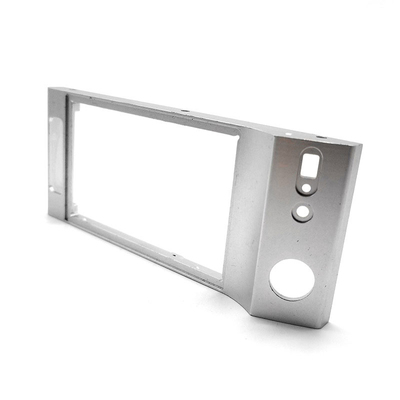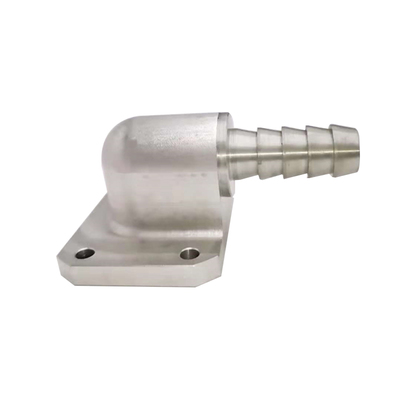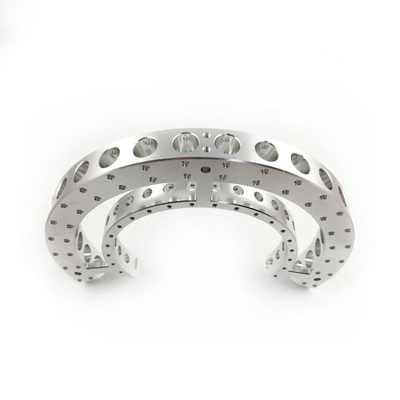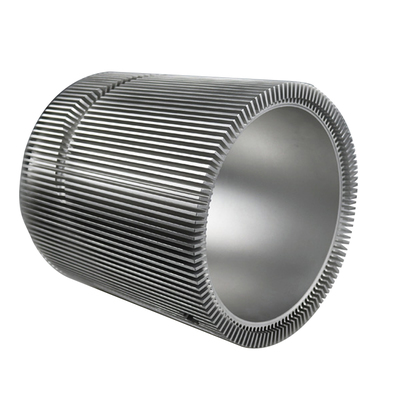Surface Modification and Mechanical Retention Mechanisms of Lightweight and High-Strength Plastics for Deep Space Missions in CNC Machining
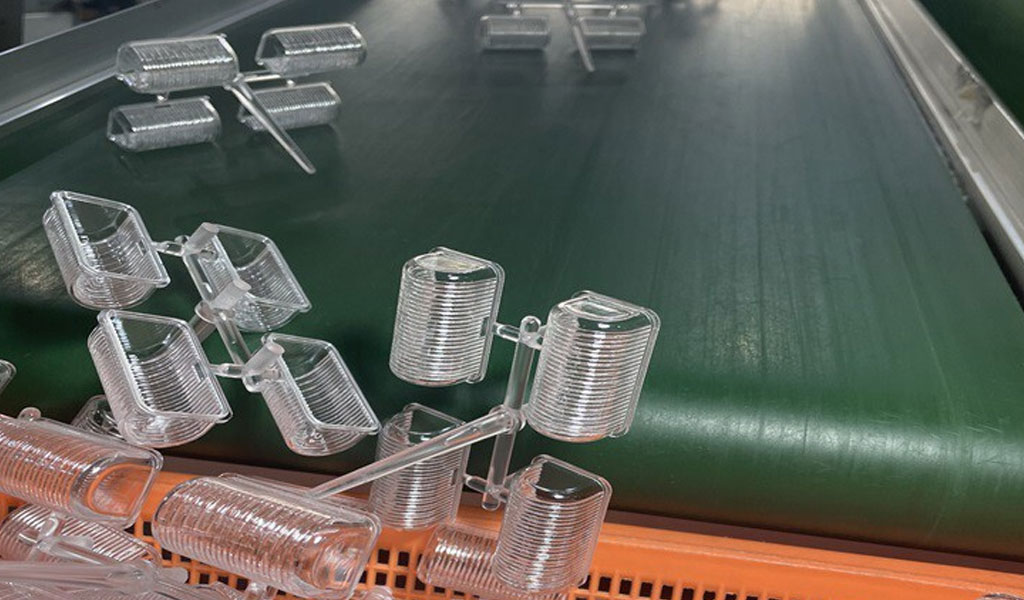
The exploration of deep space, encompassing missions beyond low Earth orbit to destinations such as the Moon, Mars, and asteroids, demands materials that combine lightweight properties with exceptional mechanical strength, thermal stability, and resistance to extreme environmental conditions. Lightweight and high-strength plastics have emerged as critical materials in aerospace engineering, particularly for applications in deep space missions where minimizing mass is essential for fuel efficiency and payload capacity. The integration of these plastics into components manufactured via computer numerical control (CNC) machining necessitates advanced surface modification techniques and robust mechanical retention mechanisms to ensure durability, reliability, and performance in the harsh conditions of space, including vacuum, extreme temperatures, and radiation exposure.
This article provides a comprehensive examination of lightweight and high-strength plastics suitable for deep space missions, focusing on their surface modification strategies and mechanical retention mechanisms in the context of CNC machining. It explores the material properties, surface treatment methods, mechanical retention techniques, and their applications in spacecraft components. Detailed comparative tables are included to elucidate the properties and performance of various plastics and their machining characteristics.
Lightweight and High-Strength Plastics: Material Overview
Lightweight and high-strength plastics are polymeric materials engineered to offer high specific strength (strength-to-weight ratio), low density, and resistance to environmental stressors. These plastics are increasingly favored over traditional metals like aluminum and titanium in aerospace applications due to their ability to reduce spacecraft mass while maintaining structural integrity. Common plastics used in deep space missions include polyetheretherketone (PEEK), polyimide (PI), polytetrafluoroethylene (PTFE), and advanced composites such as carbon-fiber-reinforced polymers (CFRP).
Polyetheretherketone (PEEK)
PEEK is a high-performance thermoplastic known for its exceptional mechanical properties, including a tensile strength of approximately 100 MPa, high thermal stability (up to 250°C), and resistance to chemical degradation. Its low outgassing in vacuum environments makes it ideal for space applications. PEEK is often used in structural components, seals, and insulators in spacecraft.
Polyimide (PI)
Polyimides, such as Kapton, exhibit remarkable thermal stability (operating range from -269°C to 400°C) and resistance to radiation, making them suitable for thermal blankets, flexible circuits, and insulation in deep space environments. Their tensile strength ranges from 70 to 150 MPa, depending on the formulation.
Polytetrafluoroethylene (PTFE)
PTFE, commonly known as Teflon, is valued for its low friction coefficient, chemical inertness, and thermal stability (up to 260°C). It is used in bearings, seals, and non-stick coatings in spacecraft components, although its relatively low tensile strength (20–30 MPa) limits its use in high-load applications.
Carbon-Fiber-Reinforced Polymers (CFRP)
CFRPs combine a polymer matrix (often epoxy or PEEK) with carbon fibers to achieve tensile strengths exceeding 500 MPa and densities as low as 1.5 g/cm³. Their high stiffness and lightweight properties make them ideal for structural components like satellite frames and antenna supports.
Table 1: Properties of Lightweight and High-Strength Plastics
|
Material |
Density (g/cm³) |
Tensile Strength (MPa) |
Operating Temperature (°C) |
Key Applications |
|---|---|---|---|---|
|
PEEK |
1.3–1.4 |
90–100 |
-50 to 250 |
Structural components, seals |
|
Polyimide |
1.4–1.5 |
70–150 |
-269 to 400 |
Thermal blankets, circuits |
|
PTFE |
2.1–2.2 |
20–30 |
-200 to 260 |
Bearings, seals |
|
CFRP |
1.5–1.8 |
500–2000 |
-50 to 200 |
Frames, supports |
Surface Modification Techniques for Space-Grade Plastics
Surface modification is critical for enhancing the performance of plastics in deep space environments. These techniques improve adhesion, wear resistance, thermal stability, and resistance to atomic oxygen (AO) erosion, a significant concern in low Earth orbit and beyond. Surface modification methods for plastics in CNC-machined components include physical, chemical, and plasma-based treatments.
Physical Surface Modification
Physical methods, such as abrasion and laser texturing, alter the surface topography of plastics to enhance mechanical interlocking or adhesion. Abrasion involves mechanically roughening the surface using sandblasting or abrasive papers, increasing surface area for bonding. Laser texturing employs focused laser beams to create micro- or nanoscale patterns, improving adhesion for coatings or adhesives. For example, laser texturing on PEEK surfaces can increase surface roughness (Ra) from 0.5 µm to 5 µm, enhancing bond strength by up to 30%.
Chemical Surface Modification
Chemical treatments, such as acid etching and silanization, modify the surface chemistry of plastics to introduce functional groups that improve adhesion or wettability. Acid etching with sulfuric or nitric acid can functionalize PEEK surfaces with hydroxyl or carboxyl groups, increasing surface energy from 40 mN/m to 60 mN/m. Silanization involves applying silane coupling agents to form covalent bonds between the plastic and coatings, commonly used for CFRP components to enhance epoxy adhesion.
Plasma-Based Surface Modification
Plasma treatments, including low-pressure plasma and atmospheric plasma, use ionized gases to clean, activate, or deposit thin films on plastic surfaces. Oxygen plasma treatment on polyimide surfaces removes organic contaminants and introduces oxygen-containing functional groups, improving adhesion for metallic coatings. Plasma-enhanced chemical vapor deposition (PECVD) can deposit silicon oxide (SiOx) or diamond-like carbon (DLC) coatings, enhancing wear resistance and AO erosion resistance. For instance, a 100 nm SiOx coating on Kapton reduces AO erosion yield by 90%.
Table 2: Surface Modification Techniques and Effects
|
Technique |
Mechanism |
Applicable Plastics |
Key Benefits |
Limitations |
|---|---|---|---|---|
|
Abrasion |
Surface roughening |
PEEK, CFRP |
Improved adhesion |
May weaken surface |
|
Laser Texturing |
Micro/nano patterning |
PEEK, PI |
Precise control |
High equipment cost |
|
Acid Etching |
Functional group addition |
PEEK, PI |
Enhanced wettability |
Chemical waste |
|
Plasma Treatment |
Surface activation/coating |
PI, PTFE, CFRP |
High efficiency |
Requires vacuum systems |
Mechanical Retention Mechanisms in CNC Machining
Mechanical retention refers to the strategies used to secure lightweight plastics during CNC machining and in their final application to ensure structural integrity and performance. These mechanisms are critical for maintaining dimensional accuracy, preventing delamination, and ensuring reliable performance in deep space environments.
Fixturing and Clamping
CNC machining of plastics requires specialized fixturing to prevent deformation due to their lower stiffness compared to metals. Vacuum chucks and soft jaw clamps are commonly used to secure PEEK and CFRP workpieces without inducing stress concentrations. For example, vacuum chucks with a holding force of 10 kPa can effectively secure thin CFRP panels without warping.
Interlocking Features
Machined interlocking features, such as dovetails, T-slots, and threaded inserts, enhance mechanical retention in assembled components. These features are CNC-machined into plastic parts to provide robust joints without relying solely on adhesives. For instance, PEEK components with dovetail joints can withstand shear stresses up to 50 MPa in spacecraft assemblies.
Hybrid Joining Techniques
Hybrid joining combines mechanical fasteners (e.g., screws, rivets) with adhesives to achieve high-strength bonds. In CFRP structures, titanium fasteners are often used alongside epoxy adhesives to create joints with tensile strengths exceeding 200 MPa. CNC machining ensures precise alignment of fastener holes, critical for maintaining joint integrity in vibration-heavy launch environments.
Table 3: Mechanical Retention Mechanisms
|
Mechanism |
Description |
Applicable Plastics |
Strength (MPa) |
Applications |
|---|---|---|---|---|
|
Vacuum Chucks |
Non-contact holding |
PEEK, CFRP |
10–20 kPa |
CNC machining |
|
Dovetail Joints |
Interlocking features |
PEEK, PI |
30–50 |
Structural assemblies |
|
Hybrid Joining |
Fasteners + adhesives |
CFRP, PEEK |
100–200 |
High-load components |
CNC Machining of Lightweight Plastics
CNC machining is a preferred manufacturing method for producing complex, high-precision components from lightweight plastics. The process involves subtractive manufacturing using tools such as mills, lathes, and routers to shape plastic workpieces. Key considerations include tool selection, cutting parameters, and thermal management to prevent material degradation.
Tool Selection
Carbide or diamond-coated tools are used for machining high-strength plastics to minimize tool wear and ensure clean cuts. For PEEK, a 2-flute carbide end mill with a 0.5 mm radius is effective for reducing burr formation. CFRP requires diamond-coated tools to mitigate fiber pullout and delamination.
Cutting Parameters
Optimized cutting parameters are essential to balance material removal rate and surface quality. For PEEK, a spindle speed of 10,000–15,000 RPM and a feed rate of 0.1–0.2 mm/rev are recommended. CFRP machining requires lower feed rates (0.05–0.1 mm/rev) to prevent delamination. Cooling with compressed air or minimal quantity lubrication (MQL) helps manage heat buildup.
Thermal Management
Plastics are sensitive to heat generated during machining, which can cause melting or dimensional inaccuracies. For PTFE, which has a low melting point (327°C), cryogenic cooling with liquid nitrogen can maintain surface integrity. PEEK and CFRP benefit from air cooling to avoid thermal degradation.
Table 4: CNC Machining Parameters for Lightweight Plastics
|
Material |
Tool Type |
Spindle Speed (RPM) |
Feed Rate (mm/rev) |
Cooling Method |
|---|---|---|---|---|
|
PEEK |
Carbide |
10,000–15,000 |
0.1–0.2 |
Air cooling |
|
PI |
Carbide |
8,000–12,000 |
0.08–0.15 |
Air cooling |
|
PTFE |
Carbide |
5,000–10,000 |
0.05–0.1 |
Cryogenic |
|
CFRP |
Diamond |
12,000–18,000 |
0.05–0.1 |
MQL |
Applications in Deep Space Missions
Lightweight and high-strength plastics are integral to various spacecraft components, including structural frames, thermal management systems, and electronic housings. Their use in deep space missions enhances mission efficiency by reducing launch costs and improving payload capacity.
Structural Components
CFRP is widely used in satellite frames and rover chassis due to its high specific strength. For example, the Mars Perseverance rover incorporates CFRP panels machined to tolerances of ±0.01 mm for structural stability.
Thermal Management
Polyimides like Kapton are used in multi-layer insulation (MLI) blankets to protect spacecraft from solar radiation and extreme temperatures. CNC-machined Kapton sheets ensure precise layering for optimal thermal performance.
Electronic Housings
PEEK is used to fabricate housings for electronic components, providing electrical insulation and resistance to radiation-induced degradation. CNC machining enables the creation of complex geometries with integrated cooling channels.
Challenges and Future Directions
Despite their advantages, lightweight plastics face challenges in deep space applications. Atomic oxygen erosion, radiation-induced embrittlement, and outgassing remain concerns. Future research focuses on developing advanced coatings, such as graphene-based films, to enhance AO resistance. Additionally, additive manufacturing techniques, such as 3D printing, are being explored to complement CNC machining, enabling the production of hybrid plastic-metal components.
Table 5: Challenges and Mitigation Strategies
|
Challenge |
Description |
Mitigation Strategy |
Applicable Plastics |
|---|---|---|---|
|
AO Erosion |
Surface degradation in LEO |
SiOx/DLC coatings |
PI, PTFE |
|
Radiation Embrittlement |
Loss of mechanical properties |
Radiation-hardened formulations |
PEEK, CFRP |
|
Outgassing |
Release of volatile compounds |
Low-outgassing grades |
PEEK, PI |
Conclusion
Lightweight and high-strength plastics, such as PEEK, polyimide, PTFE, and CFRP, are pivotal in enabling deep space missions through their exceptional mechanical properties and low density. Surface modification techniques, including physical, chemical, and plasma-based methods, enhance their performance in extreme environments. Mechanical retention mechanisms, such as fixturing, interlocking features, and hybrid joining, ensure structural integrity during CNC machining and in-service applications. As deep space exploration advances, continued innovation in material formulations, surface treatments, and manufacturing techniques will further expand the role of these plastics in aerospace engineering.
Reprint Statement: If there are no special instructions, all articles on this site are original. Please indicate the source for reprinting:https://www.cncmachiningptj.com/,thanks!
 PTJ® provides a full range of Custom Precision cnc machining china services.ISO 9001:2015 &AS-9100 certified. 3, 4 and 5-axis rapid precision CNC machining services including milling, turning to customer specifications,Capable of metal & plastic machined parts with +/-0.005 mm tolerance.Secondary services include CNC and conventional grinding, drilling,die casting,sheet metal and stamping.Providing prototypes, full production runs, technical support and full inspection.Serves the automotive, aerospace, mold&fixture,led lighting,medical,bicycle, and consumer electronics industries. On-time delivery.Tell us a little about your project's budget and expected delivery time. We will strategize with you to provide the most cost-effective services to help you reach your target,Welcome to Contact us ( [email protected] ) directly for your new project.
PTJ® provides a full range of Custom Precision cnc machining china services.ISO 9001:2015 &AS-9100 certified. 3, 4 and 5-axis rapid precision CNC machining services including milling, turning to customer specifications,Capable of metal & plastic machined parts with +/-0.005 mm tolerance.Secondary services include CNC and conventional grinding, drilling,die casting,sheet metal and stamping.Providing prototypes, full production runs, technical support and full inspection.Serves the automotive, aerospace, mold&fixture,led lighting,medical,bicycle, and consumer electronics industries. On-time delivery.Tell us a little about your project's budget and expected delivery time. We will strategize with you to provide the most cost-effective services to help you reach your target,Welcome to Contact us ( [email protected] ) directly for your new project.

- 5 Axis Machining
- Cnc Milling
- Cnc Turning
- Machining Industries
- Machining Process
- Surface Treatment
- Metal Machining
- Plastic Machining
- Powder Metallurgy Mold
- Die Casting
- Parts Gallery
- Auto Metal Parts
- Machinery Parts
- LED Heatsink
- Building Parts
- Mobile Parts
- Medical Parts
- Electronic Parts
- Tailored Machining
- Bicycle Parts
- Aluminum Machining
- Titanium Machining
- Stainless Steel Machining
- Copper Machining
- Brass Machining
- Super Alloy Machining
- Peek Machining
- UHMW Machining
- Unilate Machining
- PA6 Machining
- PPS Machining
- Teflon Machining
- Inconel Machining
- Tool Steel Machining
- More Material

